If you’ve spent any amount of time at the gym, you’ve probably noticed people performing exercises with improper form. Perhaps their grip is too wide on the lat pulldown to target their lats effectively, or someone’s back is excessively rounded during Romanian deadlifts. Many memories might come to mind for you of strangers you saw in the gym essentially wasting their time via poor form. While your form might be correct, you are likely not maximizing your potential if you’re not lining up your lifts with your structure.
Lining up your structure is a simple concept: set up exercises such that you move through your full range of motion (ROM), which will allow you to maximize gains. Accurately lining up your structure while training not only has the potential to increase your strength by training through full ROM but can also help avoid injury or applying excess stress to your joints.
Let’s dive into some examples and get this quick and dirty anatomy lesson to catapult your future gains.
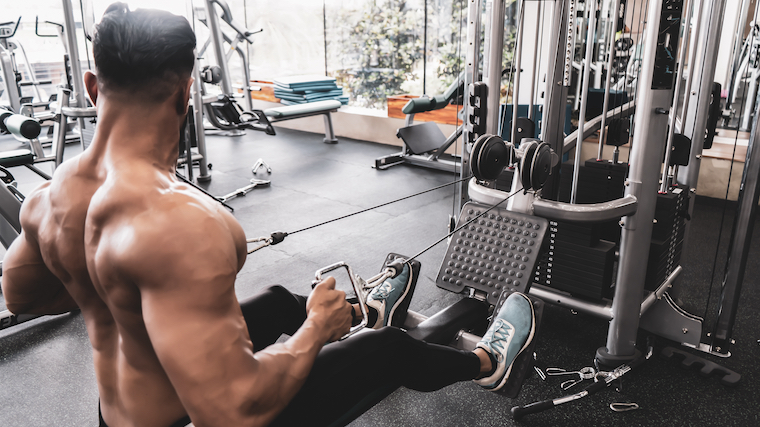
[Related: What It Really Means to Be a Hip or Knee-Dominant Lifter]
Choosing Attachments
Let’s say you are performing triceps extensions using a rope attachment on a cable machine. You’ve done your due diligence of ensuring that your body is aligned with the cable to allow you to isolate the triceps during the concentric portion of the movement. You’re even keeping your shoulders blades engaged to prevent your delts from taking on any of the load. Great job! Now ask yourself, are you getting peak contraction by shortening the muscle through its full ROM, or are you grunt working through the reps?
As a routine gymgoer who already has a decent V-taper, perhaps you’re still pinning your elbows to your sides during each rep because it’s meant to be an isometric movement.
Knowing how to line up your structure can be fruitful in this example and similar situations. Let go of the attachment, move away from the cable machine, and move your arms as though you are doing those same triceps extensions. You may notice that your hands are naturally wider apart due to your shoulder width than they are when holding onto the rope attachment. Huzzah! That’s your natural “structure,” and there’s an opportunity to line it up better with the equipment to improve the movement.
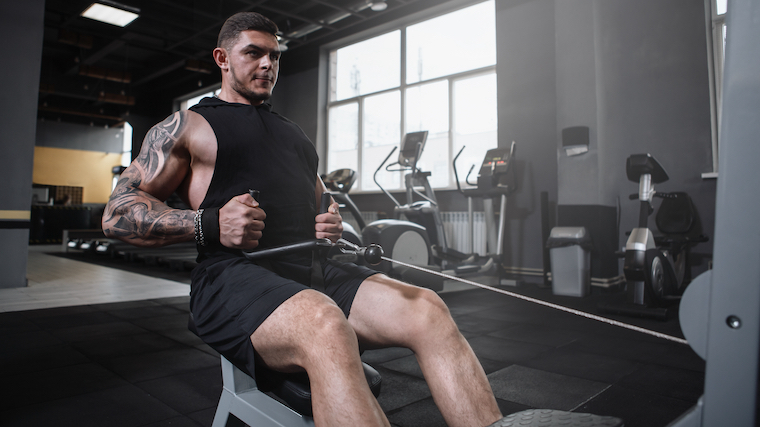
A longer rope attachment could allow for that more natural position in this example. If your gym doesn’t have long enough rope attachments, get greedy and grab two rope attachments — one for each hand. Doing so is likely to allow for better alignment during the exercises, less stress on your elbows and shoulder joints which might be compensating, and most importantly, offer an effective contraction of the triceps through full ROM.
[Related: The 15 Best Posterior Chain Exercises for Stronger Lifts and Bigger Glutes]
Know Your Anatomy
Let’s say you’re performing a seated cable row or a lat pulldown. The same idea of choosing an attachment that allows you to move naturally through the movement is still important. With a larger muscle group like the back, knowing where the muscle fibers are that you’re targeting can inform how to set up an exercise.
A useful cue when your muscles contract is “shortening the muscle.” As you perform the concentric portion of the rep, the muscle fibers contract. As you perform the eccentric portion of the rep, the muscle fibers lengthen. Rather than simply moving weight from one spot to another, the focus should be on shortening the muscle. The added load is just that — the goal isn’t to move weight; it’s to achieve full contraction of the targeted muscle.
Positioning yourself to allow those muscle fibers to contract and stretch along their alignment on your body will better isolate them. This is where the expression “line of pull” comes from. If you’re performing a seated row, how far you lean back or lean forward will alter the line of pull, emphasizing different muscle fibers in those positions.
That same idea applies to the lat pulldown. If you’re seated in a very upright position under the attachment, the line of pull will be different than if you leaned back somewhat. It would be even more distinct if you performed single-arm lat pulldowns from a kneeling position. These are all variations of the same movement pattern but can mean wildly different things for you and how your workout “feels” from set to set.
Muscle Insertions
The unique orientation of your muscle fibers is why it’s not feasible to do certain things during your workouts. A common example would be trying to isolate your “inner chest” — the fibers of the pectoralis major aren’t built in a way that makes the inner area anatomically distinct.
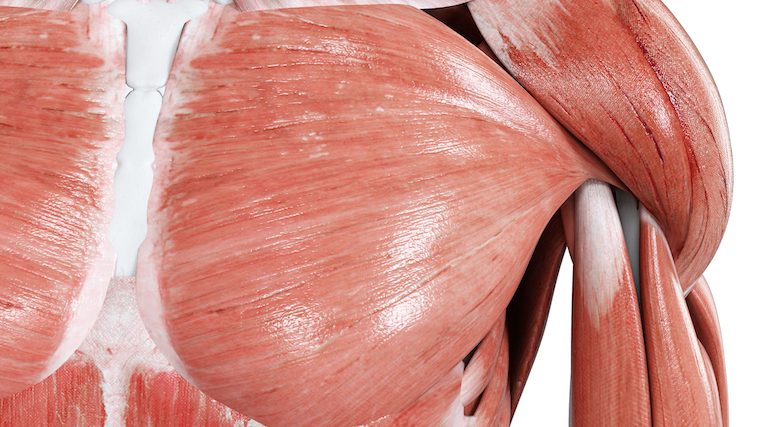
[Related: How to Make Bodybuilding Gains With the Smith Machine]
Don’t worry; we won’t dive too deep into the anatomy stuff, but having a baseline knowledge of it can be invaluable in the gym. Looking at the above image of the pec muscle, you can see where the muscle fibers insert into the sternum and attach to the shoulder. The reason that it’s not possible to train the “inner chest” is that there aren’t inner chest muscle fibers. The fibers cross the chest. You might be able to accentuate the separation of the pecs aesthetically through muscular development, but that’s just a result of packing on the gains.
When thinking about how to line up your structure, an image like the above can inform how you set up something like a cable chest flye or how to allow the dumbbells to fall away from each other during a chest flye on a weight bench.
Properly lining up your structure will enable you to contract the targeted muscle into its shortened position, therefore achieving a stronger contraction, resulting in a better workout that leads to more overall gains.
Lining Up Your Structure Examples
Let’s look at some other exercises and how lining up your structure can prove beneficial.
Seated Dumbbell Shoulder Press
When performing a seated dumbbell shoulder press, you may be pressing with your elbows flaring aligned with your body. This is a reasonable way to do it. However, if the goal of the movement is to load the anterior delts, then lining up your structure by shifting the elbows forward can make that happen.
Moving the elbows approximately 30 degrees forward and pressing from that position can take the pressure off the shoulder joint and better target the anterior delt.
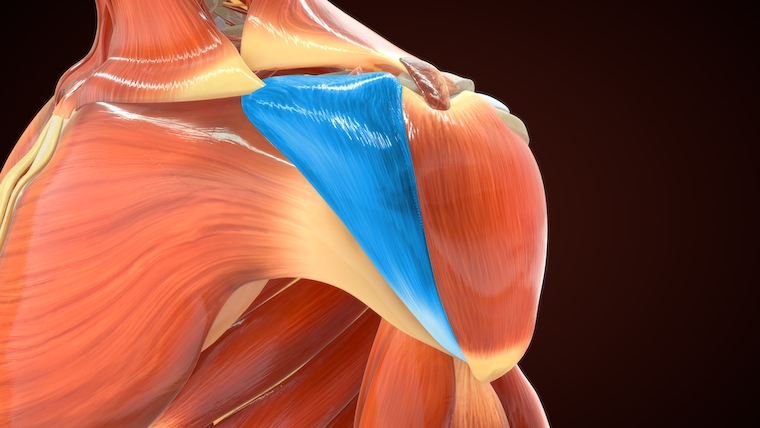
[Read More: The Best Shoulder Exercises for Bigger, Stronger Shoulders]
The image above shows that the anterior delt inserts at the clavicle and attaches to the humerus. By bringing the elbows forward during the dumbbell shoulder press, you can better focus on shortening these muscle fibers more acutely, taking it through a full range of motion.
Since the medial delt is responsible for abducting the arm (moving it away from the body), an overhead press is not going to effectively shorten it as well as a lateral raise might.
Lateral Raise
Since the medial delt’s function is to lift the arm away from the body, a lateral raise is one of the best ways to isolate it. However, gymgoers will often lift dumbbells directly out to their sides. While this can be effective when leading with the elbows and keeping the pinky higher than the thumb, this position will engage a lot of effort from the traps.
A better way to line up your structure would be to lean forward slightly, raising your arms on a slight diagonal in front of you. Think of reaching your arms out as far as possible while keeping your scapula engaged. There is no need to bring the dumbbells higher than your shoulders, exceeding the medial delts’ range of motion. These subtle tweaks to better line up your structure to the movement will apply more of the tension to the targeted muscles and lead to better output.
Rear Delt Dumbbell Flye
As with the lateral raises and the medial delts, moving dumbbells perpendicular to the body may not be the most effective way to target the rear delts. The rear delts move the arm behind the body and lining up your structure to match this movement pattern with additional load will better target them.
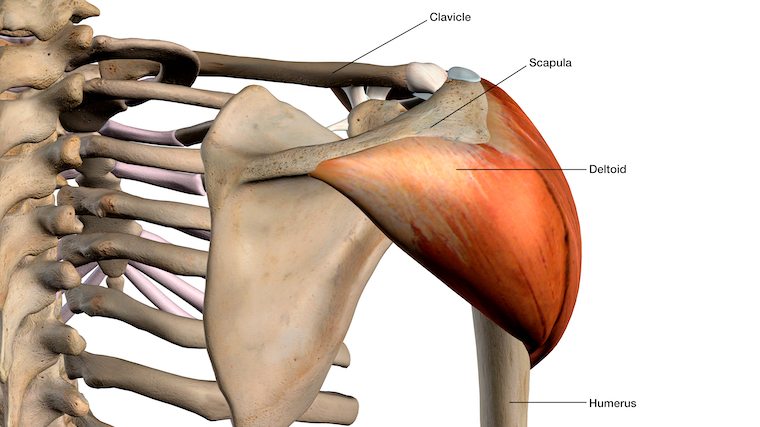
An efficient way to perform a rear delt flye would be to think of the natural diagonal your arm moves in when simply trying to reach behind you. This is perhaps a 45-or-so-degree range away from your body. Raising dumbbells in this line of pull — a better alignment of the muscle fibers of the rear delt — will emphasize that muscle group without engaging the rest of the upper back. Another improvement may be to lean prone against an incline bench to support the chest and remove balance or stress on the back as limiting factors.
Line ‘Em Up
If you have a particular muscle group that’s lagging or not developing at the rate you expect from the volume of work you put in, it might not be your diet, your recovery, or your effort that’s the issue. It might be due to suboptimal execution when performing the exercises in your workout. Improving your line of pulls and finding better alignment to your personal structure can change the course of your training for the better. The gains await, so get to work.
Featured Image: martvisionlk / Shutterstock